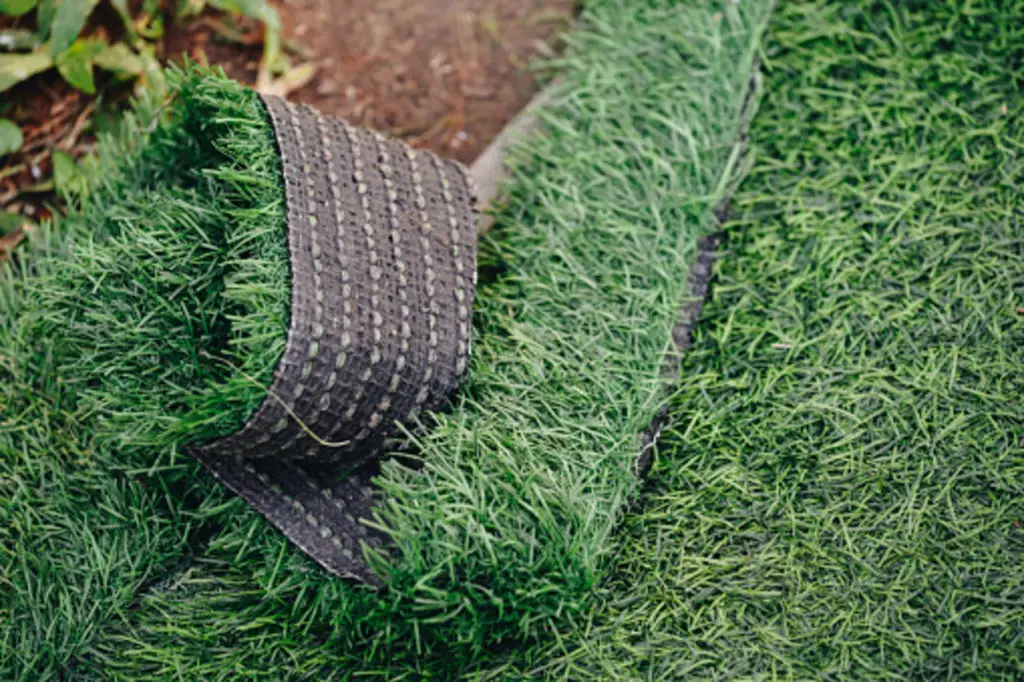Ask a group of gardeners what they think about rubber mulch, and they’ll give you plenty of colorful answers. The controversial landscaping material comes from recycled rubber material which may scorch plants, heat the ground, and add chemicals to the soil.
On the bright side, it’ll offer you a spongy, shock-absorbing surface which makes it ideal for play areas and walkways. It also helps suppress weeds.
But, how to lay rubber mulch?
When laying rubber mulch, it’s vital that over the hard surface you should add 3-6 inches of loose fill. Also, add a layer of a Geotextile cloth. Next, install the rubber mulch over this layer. If using it for gardening or landscaping purposes, your rubber mulch should be about 1 to 2 inches deep.
Read on.
Also Check – How To Put Down Rubber Mulch For Playground
How to Lay Rubber Mulch
Installing rubber mulch requires you to plan and have the right garden tools for the work. Here are the steps you need to follow to lay it:
Step 1 – Prepare the Area
Prepare the area you intend to lay the rubber mulch to ensure durability and children’s safety. Also, grade the surface using a rake.
Step 2 – Remove Debris and Dig
Remove all the debris from the area where you want to place the mulch. Please note that, if you’re going to install the rubber mulch at a recreational facility, you’ll need to dig at least six inches deep.
Step 3 – Flatten the Terrain
The area needs to be flat and have a one-inch drop for every ten feet to secure the water flow. For the task, soften the dirt with water, and use a hoe and shovel to distribute the soil evenly.
Step 4 – Install Landscaping Fabric
Stretch a landscaping fabric where you plan to lay the rubber mulch. After that, using a knife or a pair of scissors, cut holes on the fabric on the areas where you plan to plant trees or anything else that’ll come up above the ground.
Step 5 – Securing the Landscaping Fabric
Use liquid nails or staples and attach the edge of the landscaping fabric. It ensures that the mulch remains in place and prevents air pockets from forming. So, if air pockets develop, they give room for weeds to grow under the rubber mulch, making it unstable.
Step 6 – Shovel the Rubber Mulch
Shovel the rubber mulch as you do the installation. Thus, if you need to create a slope or an elevation, we recommend adding soil and rocks. Once you’re done adding the rocks and soil, cover the surface area using a fabric.
Step 7 – Determine the Depth
Evenly distribute the soil and rocks to achieve consistency and even terrain. Keep in mind that all surface areas should be around 2 inches deep. Therefore, if the rubber mulch is on a playground, it needs to be six inches deep to allow for extra cushioning. It’ll help break children’s falls.
Running tracks or walkaways don’t need to be too deep.
Step 8 – Smooth the Terrain
Once you’ve installed the rubber mulch, use a hoe or a rake to even out the terrain to keep people from tripping or falling and make the ground safe for children.
Do You Have To Put Anything Under Rubber Mulch?
Rubber mulch is a good option for gardeners if they don’t wish to replace wood chips and weeds. That said, rubber mulch tends to sink into the soil if exposed to heavy rain. It, therefore, becomes a challenge to keep the area from mud.
So….
What Should I Put Down Before Adding Rubber Mulch?
You should use landscape fabric underneath the mulch, which helps improve how effectively the rubber mulch serves you. First, it serves as an additional method to preventing weeds. Second, the landscape fabric helps protect against erosion and shields the plants from damage caused by water flow and heavy mud.
Can You Lay Rubber Mulch Over Grass?
If you intend to install the rubber mulch over an existing turf, you need to remove the turf or kill all the grass before laying the rubber mulch. You should apply a weed killer at least a week before laying the rubber mulch at the bare minimum. Two applications will do for the best results.
Once you get rid of the weed from the soil, there’s a 95% or more reduction of weed growth.
How Deep Should My Rubber Mulch Be?
For your gardening and landscaping needs, 1-2 inches depth is sufficient. The American Society for Testing Materials requires 3-6 inches depth for playground safety standards. Such depth will cushion a 6-12 feet fall effectively.
How Do You Maintain Rubber Mulch?
Rubber mulch doesn’t need much maintenance compared to other types of mulch. It’s durable and effortless to maintain because it’s made of recycled tires, which retain their integrity and color.
If you do the rubber mulch installation and care the right way, it can look as good as new for as long as 20 years. Therefore, follow these easy steps to enjoy its benefits long-term.
Raking
Raking the rubber mulch has several benefits. It prevents debris from building up over time. Additionally, it ensures that the mulch stays uniformly spread out in the area, ensuring you turn over the exposed parts.
Therefore, the mulch attains an overall newer look when you expose the unexposed parts during the raking process.
Cleaning
There are two methods you can use when cleaning rubber mulch. One is to wash the mulch. Use an environmentally friendly soap on the area with the mulch and spray water using a hosepipe. It’s a practical and easy process.
Alternatively, you can use a leaf blower to clean out debris and leaves from the mulch.
Weed Barriers
The right care begins with proper rubber mulch installation. Hence, it would be best to lay the rubber mulch over a weed barrier. The fabric allows penetration of nutrients and water while at the same time discouraging weed growth.
Thus, you won’t have as much weed growth on the mulch and the surrounding plants.
Buy Premium Processed Recycled Rubber Mulch
Buy top-tier recycled rubber mulch with all abrasives and metals removed to achieve the best results. Furthermore, the mulch should be painted and color-treated for proper sealing of the color. Thus, when you purchase the mulch from recognized brands, you ensure that it doesn’t rub off on clothes and hands.
The old-style rubber mulch is left untreated, and the color rubs off. Therefore, before purchasing, ask if the rubber mulch is color-treated and whether it holds the color for more than ten years.
FAQs
How Often Do You Replace Rubber Mulch?
Rubber mulch has gained attention due to its long-lasting and durable effects. That said, it can last you approximately ten years on the minimum if well maintained. Some people opt to add wood mulch yearly depending on how the previous mulch is aging.
How Long Does Rubber Mulch Last?
If effectively laid, rubber mulch requires minimal maintenance compared to wood mulch, and it’ll last you for ten or more years.
What Are the Disadvantages of Rubber Mulch?
- Rubber mulch releases volatile organic compounds, which can be harmful, especially to kids.
- Recycled rubber tends to leach chemicals and heavy metals into the soil. It, therefore, leads to toxicity to certain animals and plants.
- Once installed, it’s difficult to remove the rubber mulch from the ground.
- During maintenance, it requires weeding by hand.
- The rubber mulch when not color-treated fades over time.
- There’s a high degree of the rubber mulch being flammable.
- It has a high initial cost compared to other mulch products.
Parting Shot
I hope you’ve learned how to lay rubber mulch from the tips above. Rubber mulch is an excellent, long-lasting, and low-maintenance mulch.
Thus, it’s a great option to explore because it doesn’t need frequent replacement and is easy to maintain.
Make a call if you have further questions about how to install your rubber mulch.


